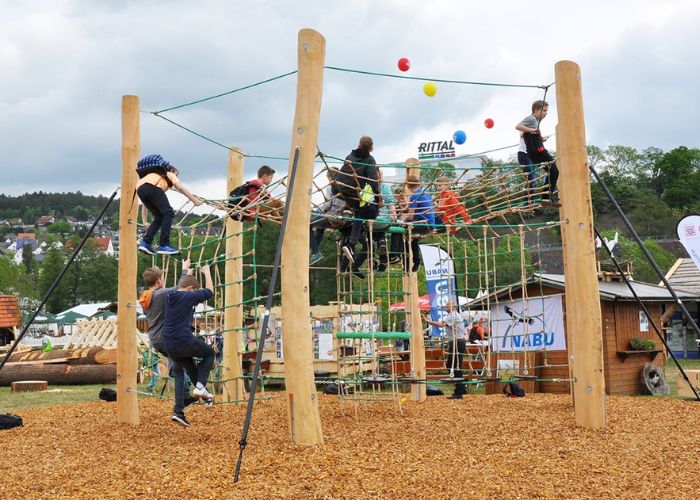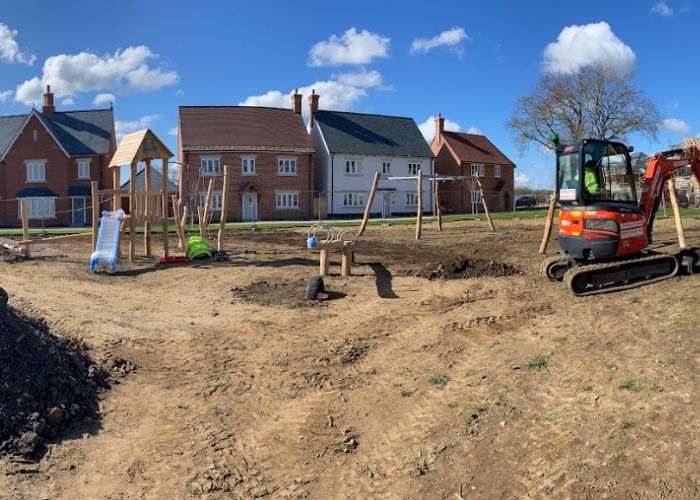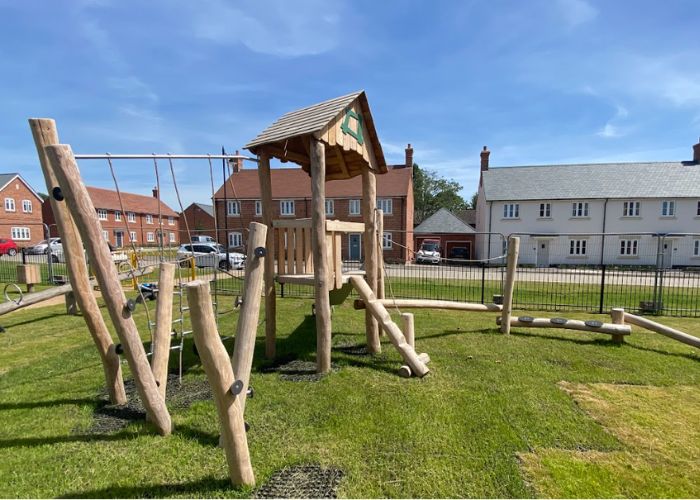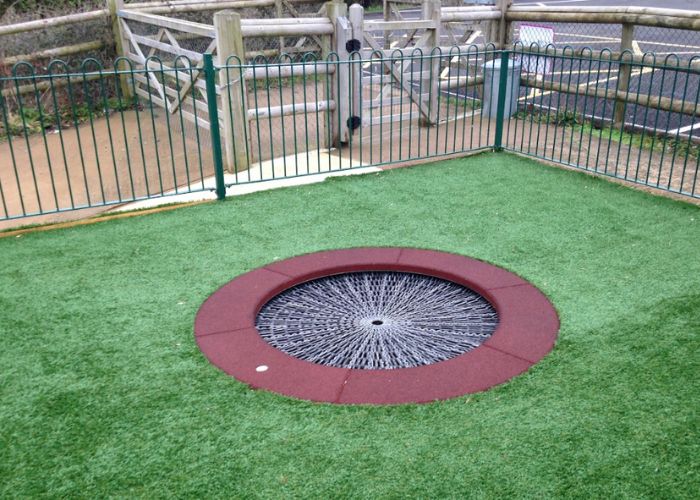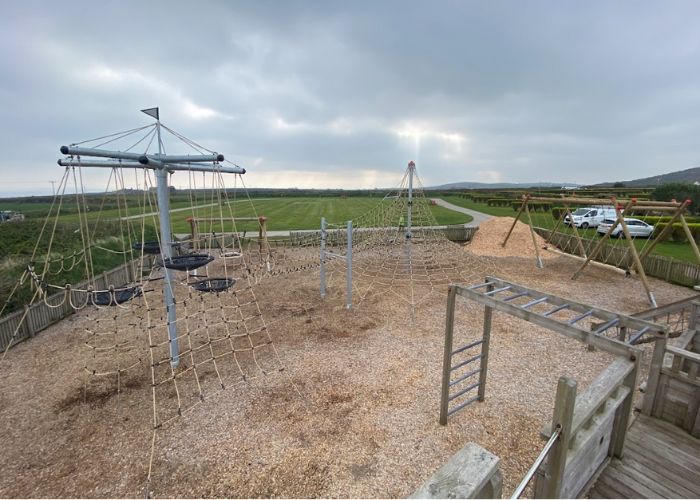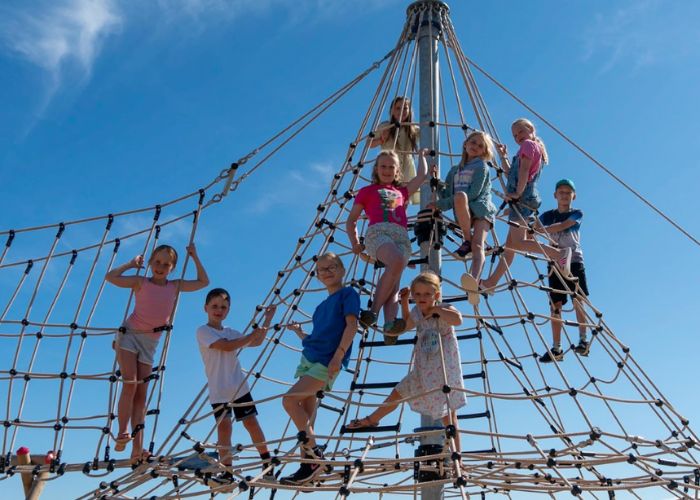10 Principles of Great Playground Design (By A Playground Designer)
With over 20 years of experience designing, creating and supplying playground equipment, we know what makes a fantastic playground design.
Playgrounds are more than places to burn off energy – they're outdoor learning environments that need to have thought behind their construction. There’s a reason why we include staple playground equipment and lay out our playgrounds in a certain way. Everything combines to promote physical and social development, as well as give children the opportunity to have fun.
With that in mind, we're going to take you through the principles that influence our excellent playground design process.
10 principles of great playground design:
- Create zones for different energy levels
- Consider the flow of the playground
- Don’t underestimate children’s aptitude for imaginative play
- Give the playground a sense of identity
- Create designs for different types of play
- Consider accessibility and inclusion
- Work with natural features at the site
- Create plenty of intersections and various levels
- Leave room for surprises and exploration
- Don’t forget the fundamental features
The Importance of Access to an Outdoor Play Space for Children
Access to outdoor play spaces is fundamental for child development, a notion supported by many UK-based studies.
PlayBoard emphasises the role of play in promoting physical health. Regular access to a playground equips children with opportunities for cardio-respiratory exercises and helps develop their motor skills. Additionally, outdoor play encourages children to engage with their environment, improving their cognitive abilities and sparking creativity.
The social benefits of playgrounds are also recognised by the National Institute of Health. It says they provide a setting in which children can interact, fostering social skills and emotional intelligence.
The significance of outdoor play spaces extends beyond mere fun, playing a critical role in the holistic development of a child, which is why getting the design right is so important.
10 Principles of Great Playground Design That Underpin Our Planning
Now we know how important it is for children to have access to outdoor play equipment in school playgrounds and parks, let's look at what goes into designing our incredible playgrounds and equipment.
"Having a design process in place really helps with the project flow, even if it’s only used as a ‘rough guide’ sometimes. This flow leads to exciting ideas and designs that can be explained thoroughly to the customer, helping to get a better understanding of how we’ve arrived at the best solution."
"Covering/considering these key elements help lead to a successful outcome for both designer and client."
– Anthony Lucas, Huck Play Manager
1) Create Zones for Different Energy Levels
When designing playgrounds, it's important create zones for different energy levels, ensuring a harmonious play environment for all children.to These zones cater to diverse needs and preferences, making the playground inclusive and versatile.
-
High-energy zones may include trampolines and rope pyramids, promoting active play.
-
Mid-energy zones could have balance beams or parcours for moderate activity.
-
Low-energy areas might feature sand pits or quiet corners for calm, creative play or rest.
This approach allows children to choose activities based on their mood, energy levels, and social preferences, fostering autonomy. It also helps manage the flow of activity, reducing the risk of accidents between children engaged in different play levels.
Explore Our Full Range of Playground Equipment
2) Consider the Flow of the Playground
The flow of a playground is vital as it influences how children interact with the play area and each other. It involves arranging play equipment and connections to determine movement patterns.
A well-planned flow prevents bottlenecks and collisions, creating a safer and more comfortable environment. It encourages exploration and seamless transitioning between activities, enhancing the play experience.
The flow also affects accessibility, ensuring all areas are reachable for children of all abilities. Proper flow planning also considers supervision sightlines, enabling quick responses.
3) Don't Underestimate Children's Aptitude for Imaginative Play
Imaginative play is a crucial aspect of a child's development. By providing spaces that foster this kind of play in playgrounds, we stimulate creativity, encourage problem-solving, and enhance language skills.
Through their imaginative games, children create scenarios and narratives that help them:
-
Interpret the world around them
-
Handle emotional challenges
-
Learn to collaborate with others
Imaginative play areas could include elements such as:
-
Creative playground equipment (features multiple play elements, like climbing and sliding)
This kind of play provides a crucial platform for children to express themselves, to explore different roles and situations, and to develop empathy and understanding.
Learn More About the Importance of Creative Play
4) Give the Playground a Sense of Identity
Establishing a sense of place is paramount in playground design. By connecting the playground to its local surroundings – be it through theming, local materials, or design elements inspired by the local environment – we create a space that not only feels part of the community but also enhances the feeling of belonging for children.
A playground that resonates with its location strengthens children's connections to their community and their understanding of local culture and heritage.
The incorporation of locality into playground design enriches the play experience, fosters a stronger sense of identity and belonging, and instils valuable lessons about the environment and society.
5) Create Designs for Different Types of Play
Inclusivity and diversity should be at the heart of playground design, and this extends to accommodating different types of play. Children are unique individuals with differing play preferences, so it's essential to create spaces that offer a variety of play experiences.
-
Physical play areas may include climbing towers, swings, and slides to improve muscle strength, fine and gross motor skills, physical development, and hand-eye coordination.
-
Sensory play spaces could incorporate sand and water elements, textured surfaces, and interactive panels to stimulate children's senses and foster exploration and discovery.
-
Social play zones might feature seating arrangements, gathering spaces, or team-play equipment to encourage cooperative play and promote social interaction and relationship-building.
-
Solo play areas should be part of the design for children who prefer to play alone or need quiet time.
By designing for different types of play, we not only cater to varied interests and abilities but also provide opportunities for children to explore, discover, and grow in a multi-faceted and enriching environment.
6) Consider Accessibility and Inclusion
Accessibility and inclusion in playgrounds are paramount for fostering an environment where every child, regardless of their abilities, feels welcome and is able to participate fully.
An accessible and inclusive playground ensures that children with different physical and cognitive abilities can navigate the playground effortlessly and engage with various play elements. This could mean featuring wheelchair-friendly equipment, like trampolines, for children with mobility issues.
A playground that supports inclusion does more than just offer physically accessible equipment. It recognises and caters to a broad range of abilities and styles of play, promoting social interaction and cooperation among children of all abilities.
This approach encourages empathy, understanding, and respect, fostering a sense of belonging and equality. It's fundamentally about creating a play space that respects and celebrates diversity.
7) Work With Natural Features at the Site
Incorporating the natural features of a site into playground design is a key principle for creating enriching and sustainable play environments. Working with the existing landscape – be it trees, hills, rocks, or bodies of water – lends authenticity to the playground and instils a sense of harmony with nature.
This approach not only preserves the aesthetic charm of the site but also provides unique play opportunities that stimulate exploration and discovery.
8) Create Plenty of Intersections & Various Levels
Intersections are crucial in playground design, enhancing interaction and activity as pathways converge and diverge. They empower children to choose their own routes, fostering autonomy and decision-making. Social interaction thrives at these points as children meet and engage with each other.
Levels add visual excitement and dimension to the playground, offering varied viewpoints and perspectives. They create distinct play zones like climbing areas, slides, and hide-and-seek spots.
They also provide physical challenges that develop balance, strength, and coordination. They also play a role in stimulating cognitive skills as children navigate heights, distances, and pathways.
9) Leave Room for Surprises & Exploration
Any well-designed playground should incorporate elements of surprise and exploration to stimulate children's curiosity and encourage creativity. These elements might include hidden nooks, secret pathways, or unexpected features in the play equipment.
These elements of surprise enrich a child's play experience, keeping them engaged and motivating them to explore further.
Children's curiosity is a powerful driver of learning and development. By introducing elements of surprise and creating opportunities for exploration, playgrounds can support children's cognitive development. They can foster problem-solving skills, encourage creative thinking, and promote spatial awareness.
10) Don't Forget the Fundamental Features
While innovative play equipment and creative design elements are critical, the fundamental features of a playground, such as benches, rubbish bins, and pathways, play an equally important role in creating a safe, enjoyable, and community-friendly space.
-
Benches provide a place for rest for both children and adults, enhancing comfort and enabling longer stays at the playground. They serve as social hubs where parents and carers can interact, fostering a sense of community. The strategic placement of benches allows for better supervision of children, adding an extra layer of safety.
-
Rubbish bins are essential for maintaining cleanliness and promoting responsible behaviour. They encourage users to dispose of waste properly, which not only keeps the play area attractive and hygienic but also plays a part in teaching children about respect for public spaces and environmental responsibility.
-
Pathways contribute to the flow and accessibility of the playground. They guide movement, connect different play zones, and ensure smooth transitions from one area to another. For children of all abilities, they provide accessible routes, making play areas reachable for everyone.
Upgrade Your Community Playground with Huck Play
We pride ourselves on creating the best playground environments that enrich children’s lives and foster their development.
Our commitment to quality, inclusivity, and innovation makes us the ideal choice for your new playground project. Whether it's for a community park, a family-friendly business, or primary school play equipment, we offer an extensive range of products that cater to all types of play and abilities.
With our thoughtful design principles and emphasis on safety, accessibility, and fun, we're ready to transform your playground into a vibrant, engaging space where children can learn, grow, and create lasting memories.
Check out our range of playground equipment and help children of all ages enjoy playing outdoors.
FAQs
We offer a vast range of playground equipment catering to various types of play, including physical play, social play, and solo play. We specialise in creating rope-based playground equipment that can stimulate and entertain your children. All of our playground equipment conforms with the latest EU playground safety standards, ensuring that your children are kept safe while playing. Our playground designs foster numerous developmental aspects, including physical development (through physical play areas), sensory skills (through sensory play spaces), social skills (through social play zones), and cognitive skills (through elements of surprise and exploration). Choosing our playground equipment means investing in quality and innovation. Whether it's for a community park, a commercial play area or a primary school, we provide products that cater to all types of playgrounds. With our focus on safety, accessibility, and fun, we strive to create vibrant, engaging spaces for children to learn, grow, and create lasting memories.What Kind of Playground Equipment Does Huck Play Offer?
How Does Huck Play Ensure Playground Safety?
How Do Huck Play Designs Contribute to Child Development?
Why Should I Choose Huck Play for My Playground Project?


